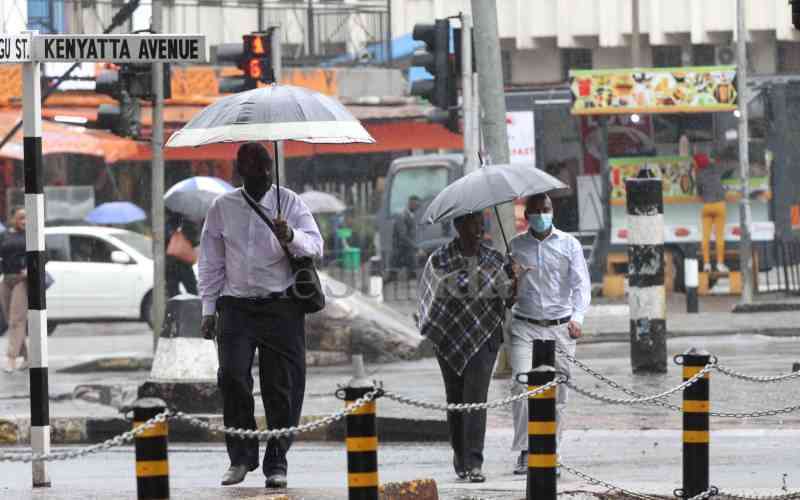As the world continues to battle the spread of COVID-19 virus pandemic, in East Africa another war caused by nature’s wrath is being fought. Every country that borders Lake Victoria is experiencing floods since the heavy rains began earlier this year.
The freshwater which lake covers an area of 68,100 km² and supports approximately over 50 million people has turned into a veritable monster that floods everything in its path from tourist beaches, residential areas and vegetation.
According to government statistics, over 14,000 people have been displaced with counties such as Baringo, Homa Bay, Migori and Siaya most affected.
Currently, the flooding has submerged about 147 beaches around Lake Victoria.
The scenario is different in neighbouring countries within the East Africa region. Uganda has its share of flooding with both the capital city, Kampala and Entebbe a town within the shores of Lake Victoria experiencing flooding.
According to the authorities in Uganda, over 7,000 people have been displaced, those living on islands around the lake have requested to be evacuated.
In the town of Mwanza, Tanzania the same script applies as floods rake havoc to those living around the shoreline.
According to marine experts, Lake Victoria receives its water mainly from the Kagera River, which flows through Uganda, Tanzania, Rwanda and Burundi. Other small rivers also contribute to its water source.
A few years back, due to the reduction of the water level, people built around the shores of the lake.
They encroached in an area, which ideally is supposed to be surrounded by a 300-metre protection zone. Families have settled around it and the water is coming back to take its place.
Kenyans must understand that floods have both natural and man-made roots.
In Kenya’s case, floods have been caused by nature which is rainfall and man-made which is encroachment into protection zones designated by the government authorities.
What we must understand is the ecosystem and how it works, for instance for a flood to occur we must understand its very simple origin, all that is needed is bare land, without natural habitation and with heavy downpour, we will end up having floods.
Science explains easily that the more severe the rain falling on barren or semi-barren land is, the more likely flood will occur, accompanied by other environmental hazards and disasters such as rockfalls, landslides and disease outbreak.
With the current infrastructural development in major cities and mushrooming residential areas even in wetlands, Lakeshores and other water bodies, the result will always be catastrophic should an area experience heavy rainfall.
Stay informed. Subscribe to our newsletter
The other aspects that Kenyans have ignored for years is a failure to have a proper drainage system.
What infrastructure developers have done in the past is to set up houses without a proper drainage system. Usually, when it rains, the water will always trace the system of flow hence when it finds it blocked, the result is flooding.
Residents have also turned the wetlands and other water bodies into dumping sites and when we experience heavy rain, we end up with floods.
Yes, we understand that nature can bring emergency floods, for instance, when a reservoir dam overflows or bursts its banks or when tsunamis and flash floods occur due to nature. The problem is when such occurrences happen with no proper drainage system; the loss becomes heavy on properties and lives.
Way forward
Over the years, we have been complaining about the preparedness status of our country when it comes to handling flooding.
As a country, we have more than enough environmental legislation policies which if only is put into use then we can address the situation. However, as always we choose to be foot-draggers in implementing these legislations for our own benefit.
The fight to end floods and other environmental hazards call for an integrated effort, which can be achieved when both the citizens and other stakeholders are reading from the same script.
We must start by ensuring that those living within the shorelines and wetlands are relocated to the areas away from the protection zones.
Citizen awareness must be among the top priorities by both the national and county governments and this can be done by ensuring that weather information is up to date when passed to the people through various media outlets or even public forums. This will help in promoting predictive flood mitigation and enable people to vacate flood paths.
Protection of natural ecosystem is also vital in averting not only flooding but also the entire environment.
The real estate and infrastructure developers in urban areas must also ensure that they don’t block the drainage system. But all in all, we must adhere to the laid down legislations for our own good.
Dr John Chumo is Committee Secretary, National Environmental Complaints Committee (NECC)
 The Standard Group Plc is a
multi-media organization with investments in media platforms spanning newspaper
print operations, television, radio broadcasting, digital and online services. The
Standard Group is recognized as a leading multi-media house in Kenya with a key
influence in matters of national and international interest.
The Standard Group Plc is a
multi-media organization with investments in media platforms spanning newspaper
print operations, television, radio broadcasting, digital and online services. The
Standard Group is recognized as a leading multi-media house in Kenya with a key
influence in matters of national and international interest.
 The Standard Group Plc is a
multi-media organization with investments in media platforms spanning newspaper
print operations, television, radio broadcasting, digital and online services. The
Standard Group is recognized as a leading multi-media house in Kenya with a key
influence in matters of national and international interest.
The Standard Group Plc is a
multi-media organization with investments in media platforms spanning newspaper
print operations, television, radio broadcasting, digital and online services. The
Standard Group is recognized as a leading multi-media house in Kenya with a key
influence in matters of national and international interest.








